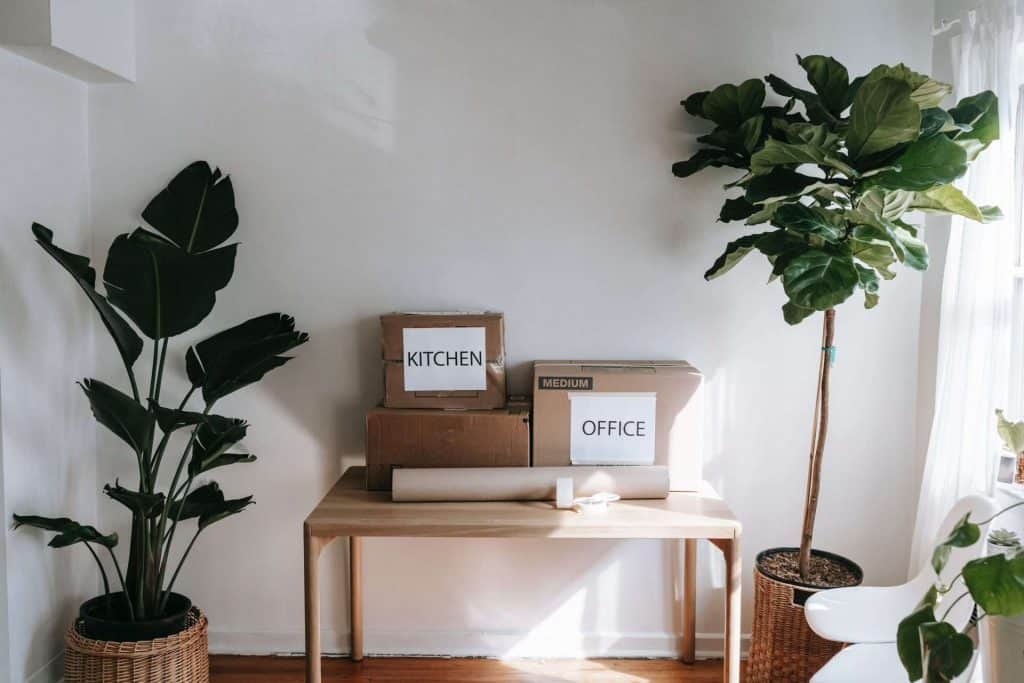We know from experience that plants can be difficult objects to move from A to B and keep them as close to the condition they were in before they were relocated. As a result, we’ve written this short guide to help anyone planning to move to protect and maximise the health of their plants during a relocation.
To make things simple, we’ve focused this guide on three main elements – sorting, packing and moving.
Start sorting your plants
It’s commonly known that the first phase of any move should start at least 6-8 weeks before your move. During this time you should be throwing away things you aren’t planning to take with you, and this may include some of your plants that you simply don’t wish to take with you.
During this process, you should check the health of your plants, and around 3 weeks before the move prune them, getting rid of dead leaves and simplifying your workload as much as possible. Pruning plants makes them more compact for the move and encourages growth.
You should designate a room or room where you’re going to store your packed removal boxes, and also your boxed plants, once you’ve prepared them for the move. For more information on packing, check out our guide on when to start packing for a move.
Be sure to check your plants over for any infestations as this will have to be dealt with before the move, and before you bring any inside, as you don’t want them moving between all your plants, or even being attracted to something inside your removal boxes.
Packaging your plants
Check the material of your plant’s pots. If your pots are heavy clay or ceramic, you may need to think about placing your plants in plastic containers (this should be done around 3 weeks before moving to give the plants enough time to adjust). You should wrap the original pots with bubble wrap and box them separately from your plants.
When it comes to packing your plants, you should do this as close to the day of the move as possible. Place your plants in boxes – larger plants boxed individually and smaller plants boxed together. You should place bubble wrap in the box to keep the plant from moving around.
You can also wrap the base of your plant in a plastic bag to avoid soil and moisture spilling out, but make sure you don’t cover the whole plant with the bag.
Garden Plants
What you do with garden plants depends entirely on how many you have. Not only will you need to dig up the plants, but you have to mend the area that you have taken them out of so you don’t leave craters behind for the next resident.
If there’s a small number of plants, you can leave it until a later date. Otherwise, it’s best to transfer them into plant pots and store them ready for the move. Moving house is a giant workload, so keeping a plan on a specific timetable is paramount to reducing stress and keeping everything on track.
Large Plants
For plants that are simply too large to be placed in the box, you have to be a bit more creative. Get yourself a horticultural fleece so that you can secure your plant without weighing it down. If a plant is far too large to move, and you can’t find a way to get them from A to Z, then perhaps you should consider taking a cutting to see if you can regrow it.
How to move your plants
As you probably know, plants do feel stress and shock. Sudden changes to their environment can affect the health of a plant, so you need to give them time to acclimatise to their new surroundings, whether that be after repotting, being placed in a box for moving, or moving to the environment of your new home.
To ensure their safety, your plants should be put in boxes, and marked as“fragile”. Also, ensure that you tape the bottom of the box to prevent the plants from falling through. Furthermore, make sure to poke some holes in the top of the box so that the plants can breathe and access light.
In the last couple of days before your move, you probably want to cease watering them this time. That way, there will be no chance of leakages which could also affect your other belongings, including any electrical items. If you do feel you still need to water a specific plant, make sure you don’t overdo it.
When the time comes to put the plants inside a box, make sure that you line the bottoms with plastic bags or sheeting, otherwise, the water may weaken the box enough to create an opening or affect some of your other boxes. You can also wrap the base of your plant in a plastic bag to avoid soil and moisture spilling out, but make sure you don’t cover the whole plant with the bag.
On the last day, seal the boxes and place them with your other marked fragile boxes. Check your plants as soon as possible after the move, and then try to replicate the same environment you took them from. You may notice a difference in their health in the first days, but they should return to their previous form soon enough.
Conclusion
King’s Removals understands the stress that comes with a house move, and provide expert care and handling to take the edge off the experience. Our specialists endeavour to make the moving experience as easy for you as possible.
We hope this article has helped you think more clearly about the process of preparing and packing your plants in readiness for a move. By taking these steps and engaging the services of a professional removal company like King’s Removals, you can ensure your plants bring you enjoyment for many years to come.

